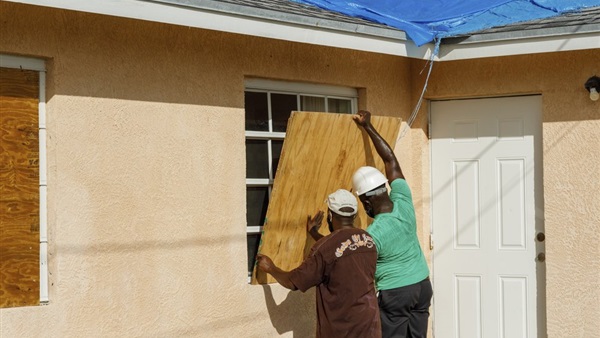Hurricane Isaias lashes Bahamas while Florida battens down

Hurricane Isaias ripped shingles off roofs and blew
over trees as it carved its way through the Bahamas early Saturday and headed
toward the Florida coast, where officials in Miami said they were closing
beaches, marinas and parks.
Miami Mayor Carlos Giménez said Friday that 20
evacuation centers were on standby that could be set up with COVID-19 safety
measures.
“We still don’t think there is a need to open
shelters for this storm, but they are ready,” he said.
Authorities in North Carolina ordered the evacuation
of Ocracoke Island, which was slammed by last year’s Hurricane Dorian, starting
Saturday evening. Meanwhile, officials in the Bahamas evacuated people on Abaco
island, who have been living in temporary structures since Dorian. People
living in the eastern end of Grand Bahama were also being moved.
Isaias had maximum sustained winds of 85 mph (135
kph) Saturday morning and some strengthening was possible later Saturday, the
U.S. National Hurricane Center in Miami said. The storm was centered about 80
miles (125 kilometers) south-southeast of Nassau in the Bahamas and was moving
northwest at 12 mph (19 kph). Forecasters said some decrease in its forward
motion was expected.
Paula Miller, Mercy Corps director for the Bahamas,
told The Associated Press that while the islands can normally withstand strong
hurricanes, some have been destabilized by the coronavirus pandemic and the
damage caused by Dorian.
“With
everything not quite shored up, property not secured, home not prepared, even a
Category 1 will be enough to set them back,” she said.
A hurricane warning was in effect for Florida’s east
coast from Boca Raton, just north of Miami, about 150 miles (241 kilometers)
north to the Volusia-Brevard county line. A hurricane watch was in effect from
Hallendale Beach to south of Boca Raton.
Florida Gov. Ron DeSantis said the state was “fully
prepared for this and any future storm during this hurricane season,” with
stockpiles of personal protective equipment, generators, bottled water and
meals ready to be distributed.
But he urged people to have seven days of food,
water and medication on hand and said state-run coronavirus testing sites in
the areas where the storm could hit would be closed.
“Our sites, because they’re outdoors with tents, if
it were to get 40-, 50-mile-per-hour winds, it would just collapse,” he said.
“Safety is paramount for that.”
Miami’s mayor said that social-distancing measures
prompted by COVID-19 meant each person in shelters needed to have 40 square
feet (3.7 square meters) and no more cafeteria-style dining would be allowed.
People who are infected with the new coronavirus and need to evacuate will be
isolated in classrooms separate them from the general population, Giménez said.
In Daytona Beach and Polk County, authorities
distributed sandbags and other officials advised people to have emergency
provisions at home sufficient for three to seven days.
A hurricane warning was in effect for northwest and
central Bahamas.
“Continue to hunker down,” said Trevor Basden,
director of the Bahamas meteorology department.
Two of those islands, Abaco and Grand Bahama, were
battered by Dorian, a Category 5 storm that hovered over the area for two days
and killed at least 70 people, with more than 280 reported missing. People are
still living in tents on both islands, and officials said crews tried to remove
leftover debris ahead of Isaias.
Prime Minister Hubert Minnis relaxed a coronavirus
lockdown as a result of the storm, but imposed a 10 p.m. to 5 a.m. curfew. He
said supermarkets, pharmacies, gas stations and hardware stores would be open
as long as weather permitted.
The Bahamas has reported more than 570 confirmed COVID-19
cases and at least 14 deaths. It recently barred travelers from the U.S.
following a surge in cases after it reopened to international tourism.
On Thursday, while still a tropical storm, Isaias
toppled trees, destroyed crops and caused widespread flooding and small
landslides in the Dominican Republic and Puerto Rico, where hundreds of
thousands of people were left without power and water.
Officials reported that a man died in the Dominican
Republic when he was electrocuted by a fallen electrical cable. More than 5,000
people were evacuated, and more than 130 communities remained cut off by
floodwaters.
In Puerto Rico, the National Guard rescued at least
35 people from floodwaters that swept away one woman who remained missing.
Isaias was expected to drop from 4 to 8 inches (10
to 20 centimeters) of rain in the Bahamas and the Turks and Caicos Islands.





